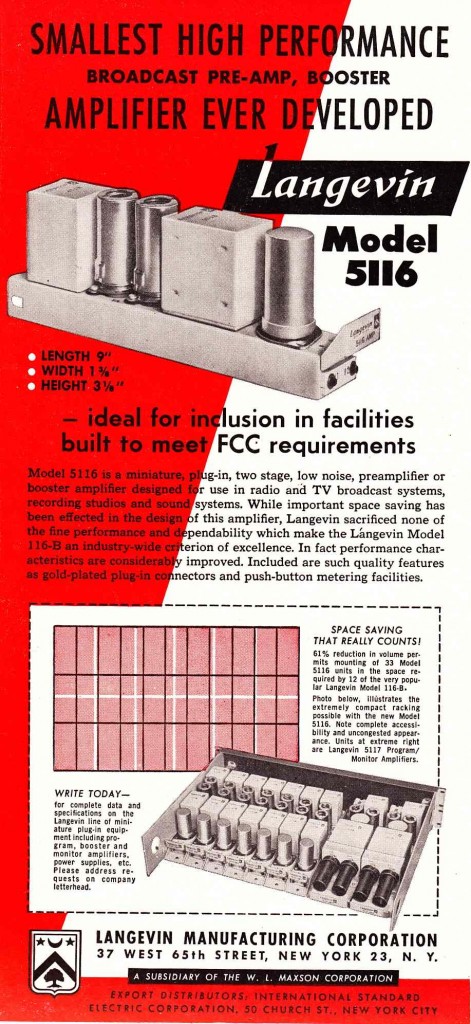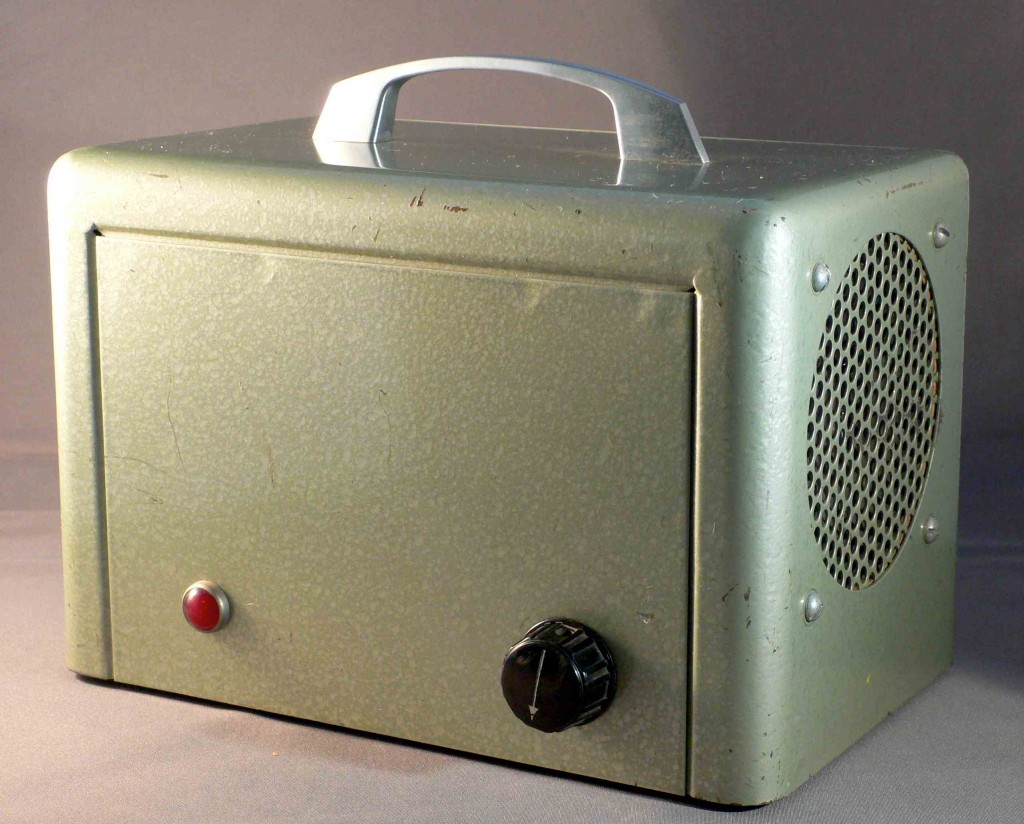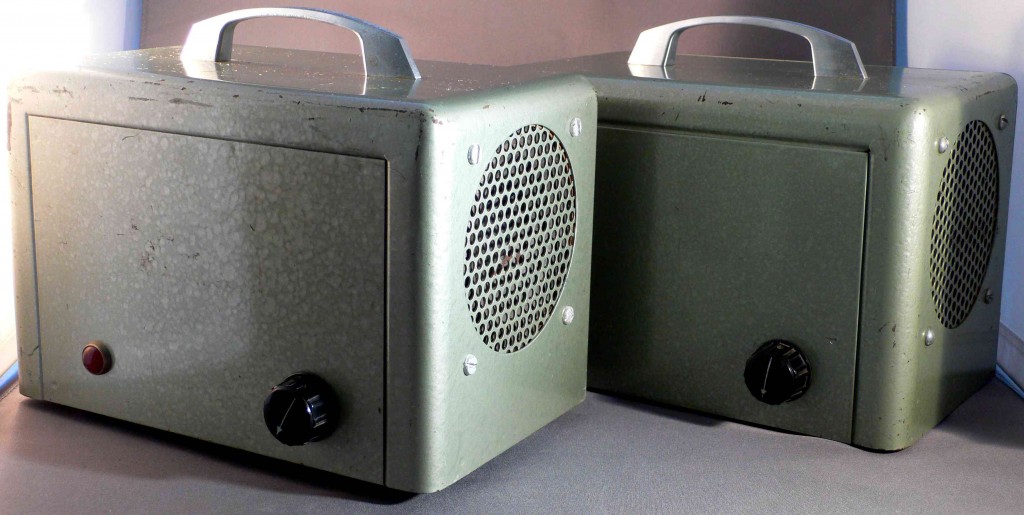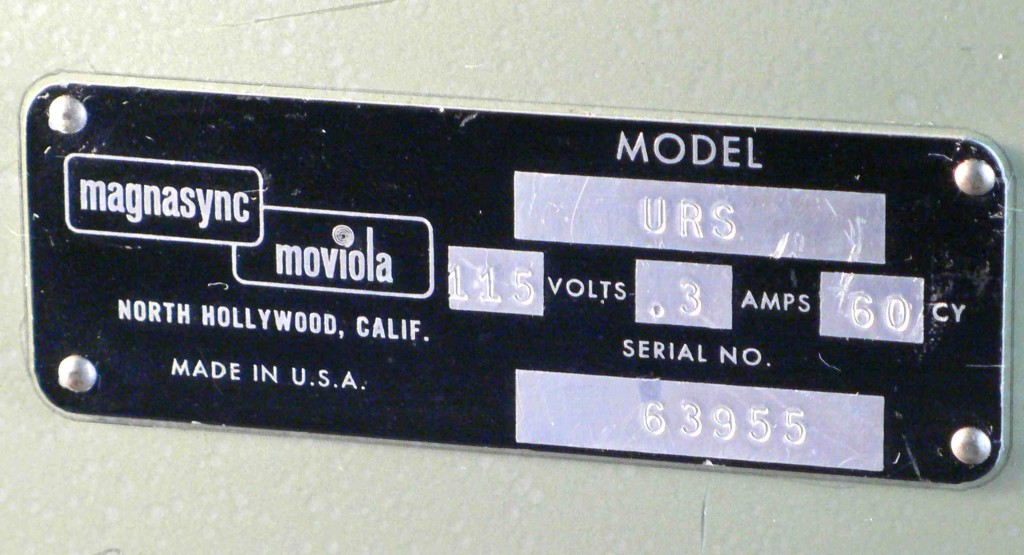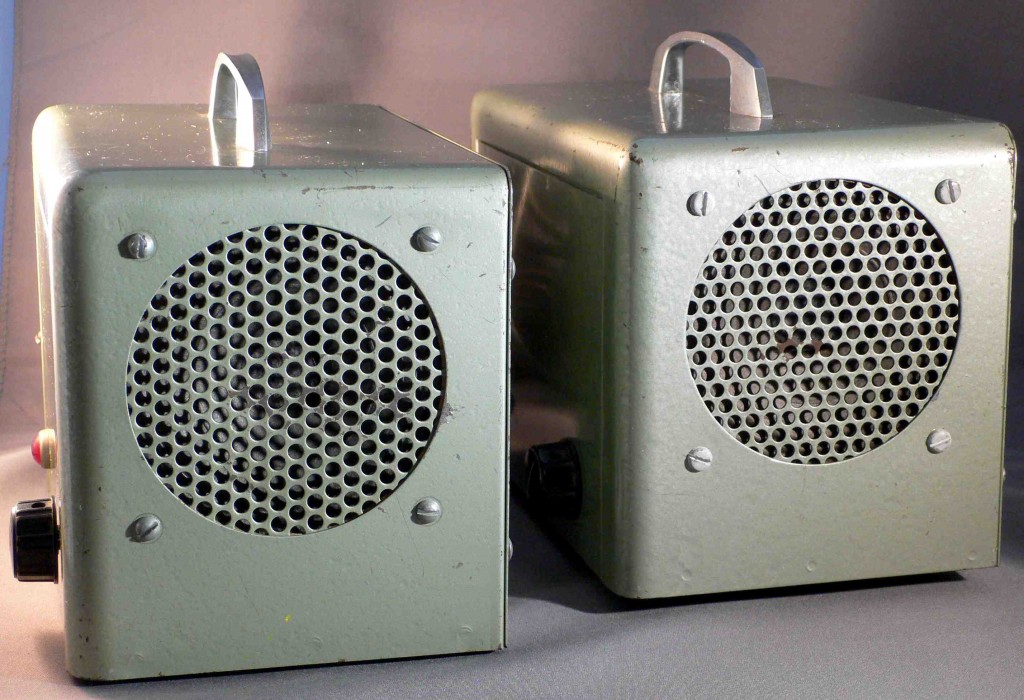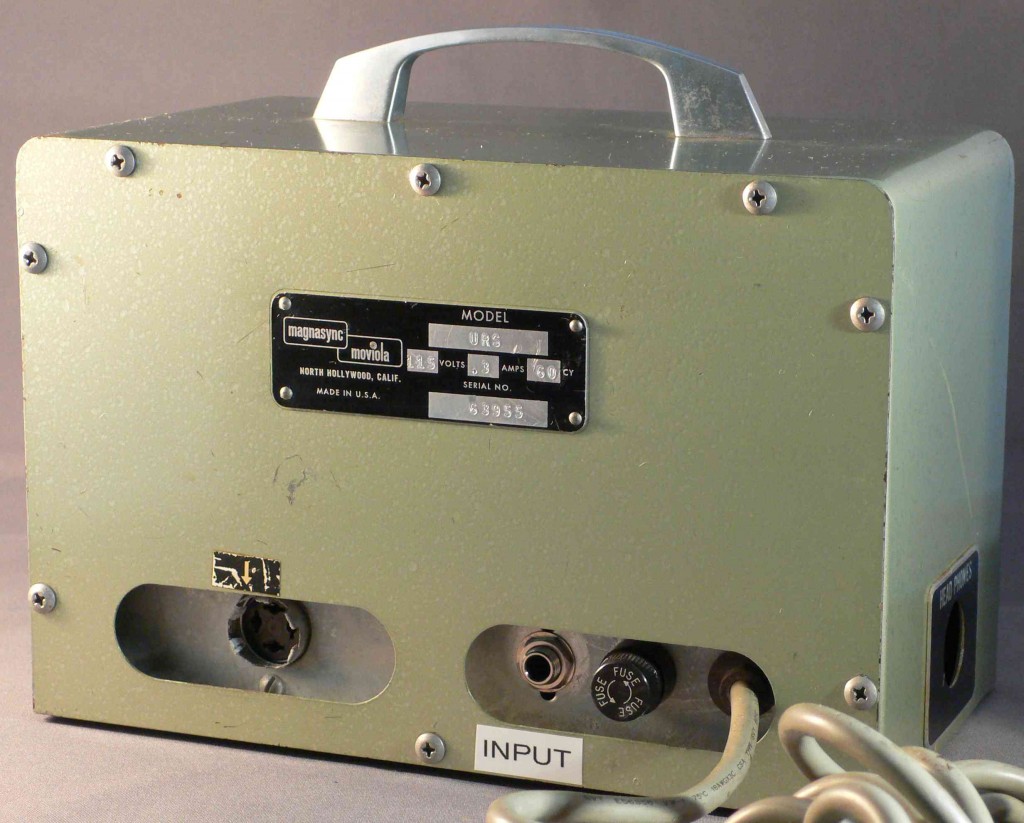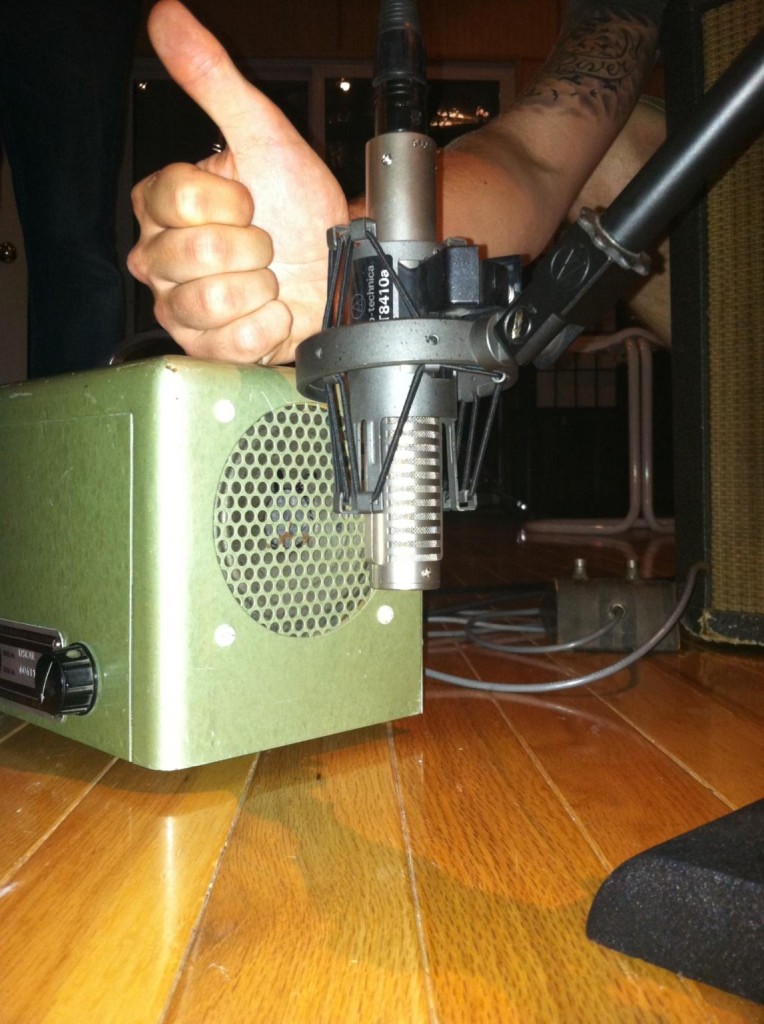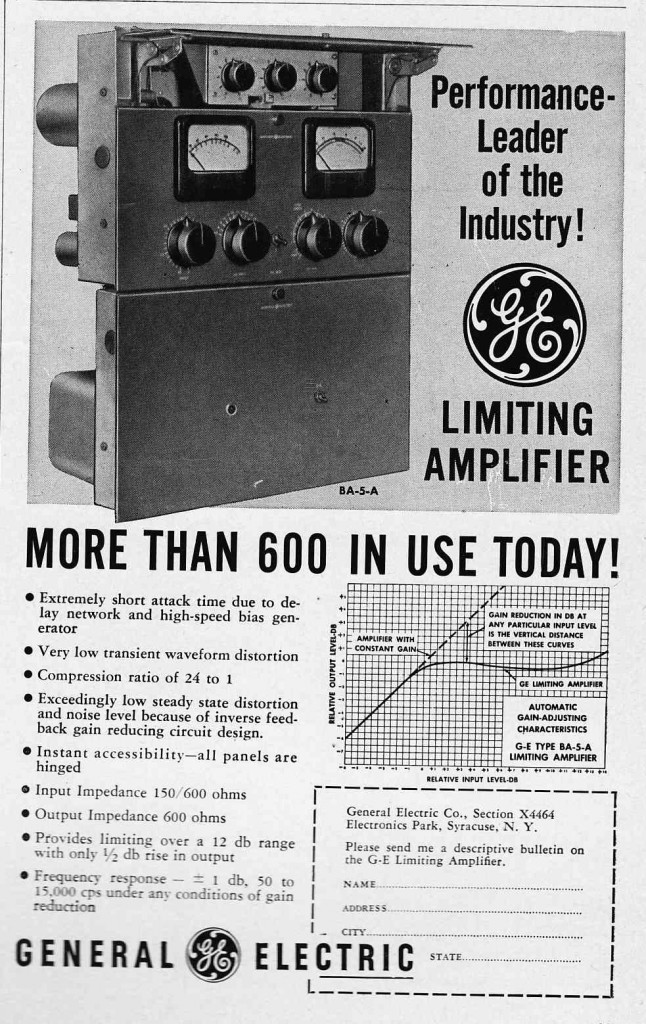 The General Electric (GE) BA-5-A Limiter
The General Electric (GE) BA-5-A Limiter
Continuing our review of the first two years of AUDIO magazine, today we will look at some of the more interesting bits of pro audio kit in evidence during 1954/1955. AUDIO magazine had just made the transition to its new moniker in the wake of the introduction of the AES Journal (Audio Engineering Society), and for the moment, AUDIO sill covered a bit of the pro audio equipment that would soon largely leave its pages.
The GE BA-5 pictured above is, AFAIK, the largest and most complicated analog audio compressor ever made. Although it has much less tubes, it’s kinda even more sophisticated than the Fairchild 660/670. Here’s the schematic if you are interested. From what i recall, the BA-5 works by creating an ultra high frequency sidechain to obtain the control voltage value for the compression; I can’t recall the details at the moment but the basic concept was to allow the unit to have huge amounts of compression with very fast timings, but without any pumping or dipping artifacts. Which was also the intent of the 660/670 design. If anyone out there has a better explanation of this monster, please chime in.
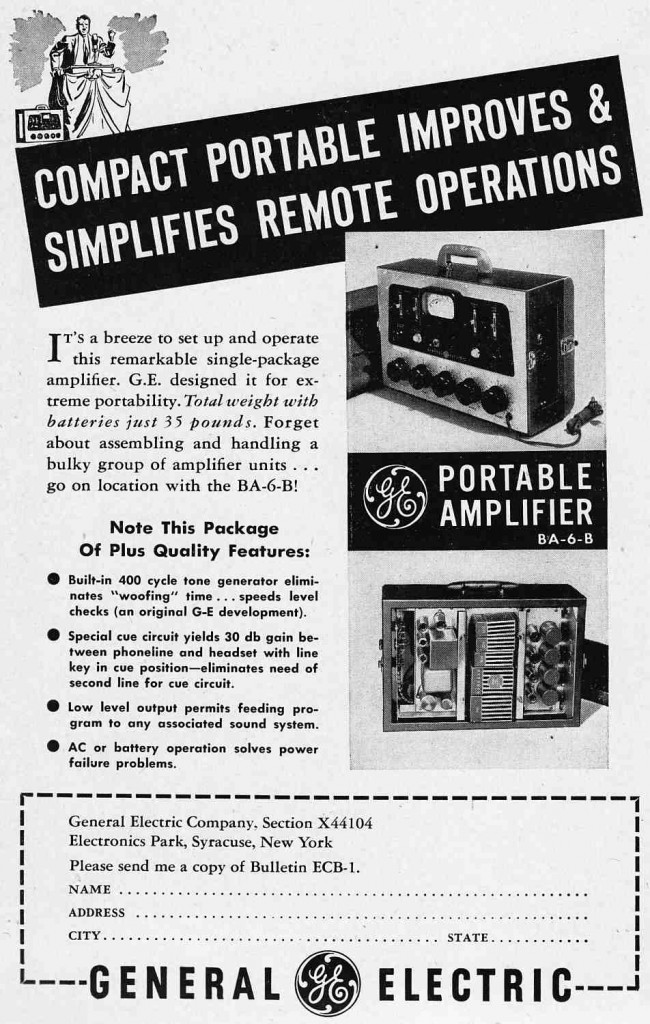 The General Electric BA-6-B remote amplifer/mixer
The General Electric BA-6-B remote amplifer/mixer
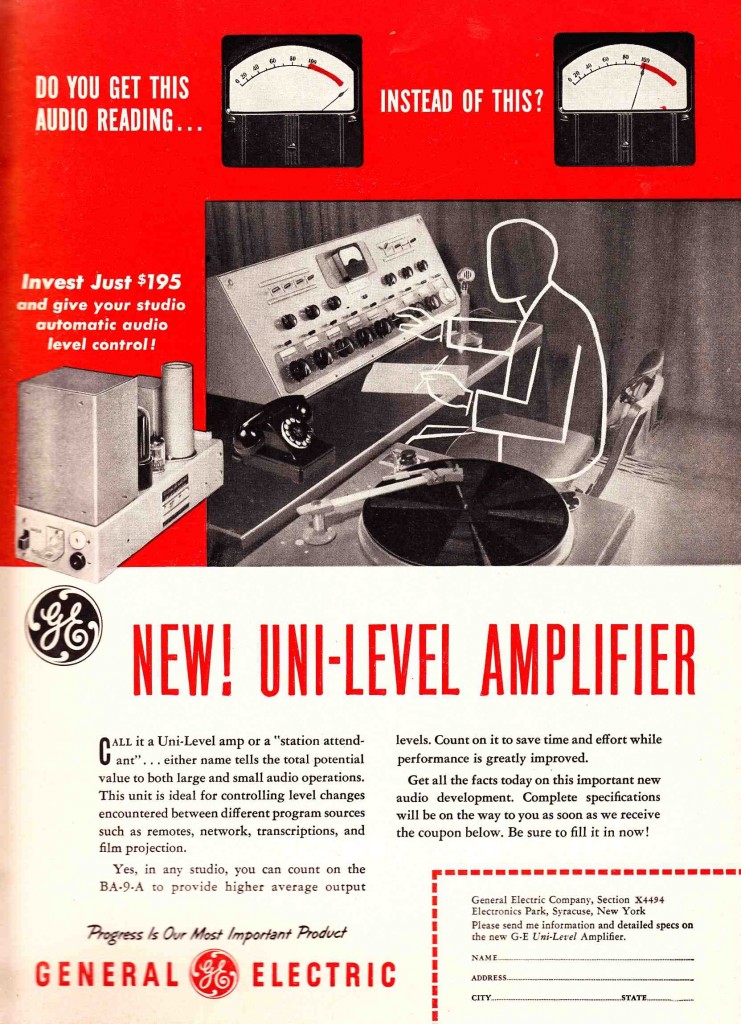 The General Electric BA-9-A compressor, a much more basic pro audio compressor. Circuit is essentially the same as the Gates Sta-Level. The BA-9 is also known as the the uni-level; schematics are readily available online.
The General Electric BA-9-A compressor, a much more basic pro audio compressor. Circuit is essentially the same as the Gates Sta-Level. The BA-9 is also known as the the uni-level; schematics are readily available online.
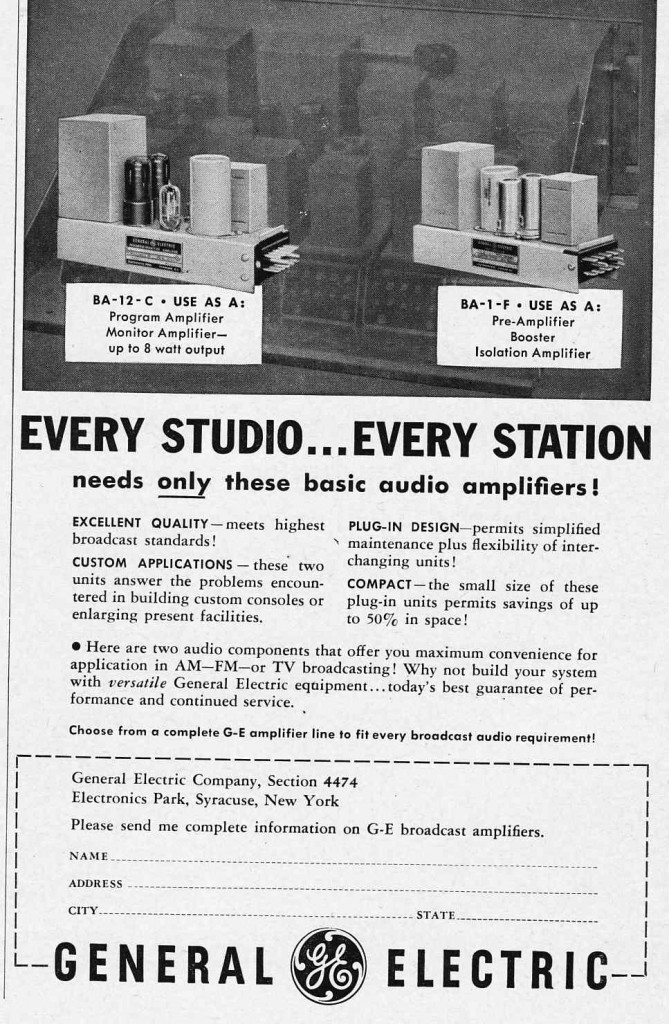 The General Electric BA-1-F plug-in preamp and BA-12-C plug-in power amp
The General Electric BA-1-F plug-in preamp and BA-12-C plug-in power amp
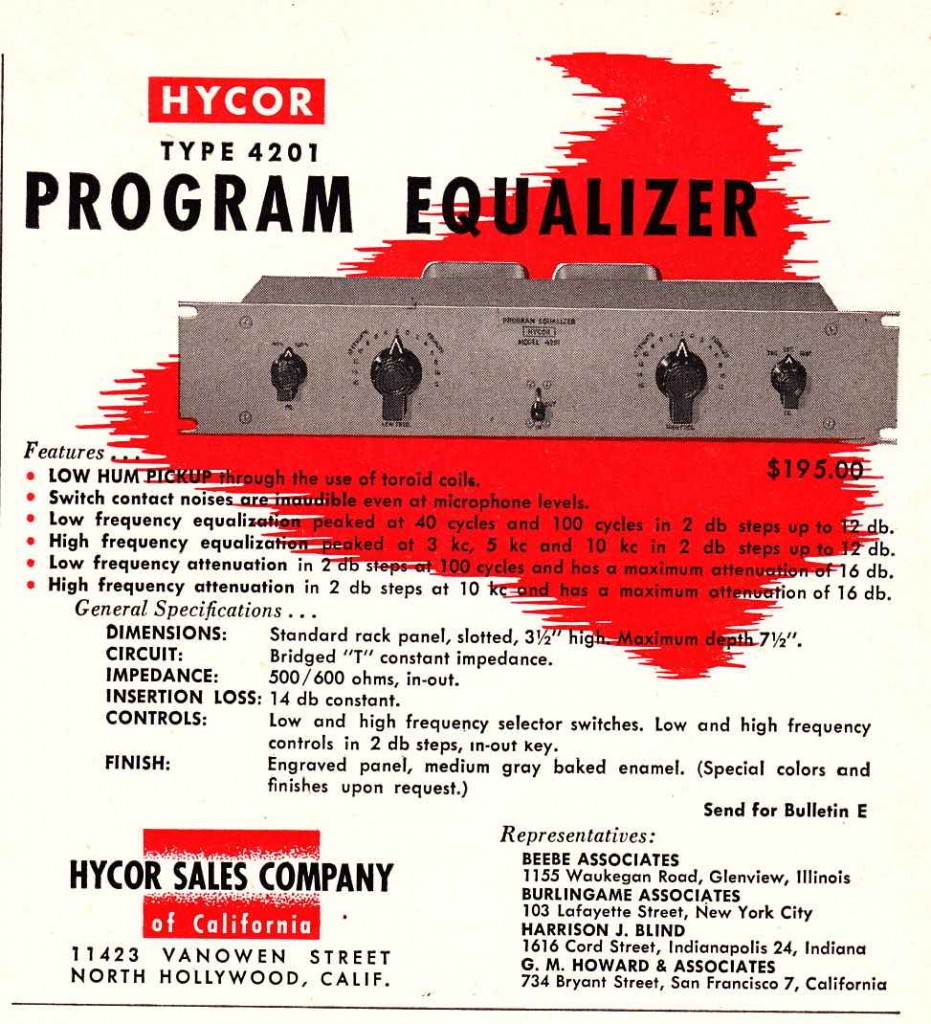 The Hycor 4201 equalizer. Similar to a Pultec program EQ but without the makeup gain amp; the Hycor is a fully passive device.
The Hycor 4201 equalizer. Similar to a Pultec program EQ but without the makeup gain amp; the Hycor is a fully passive device.
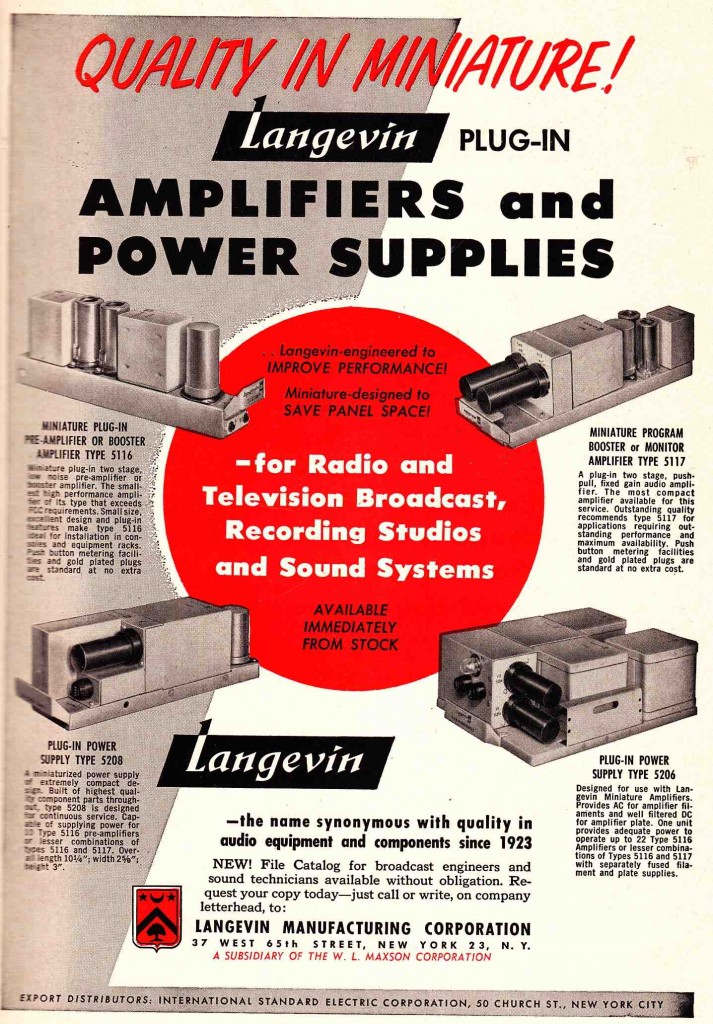 The full Langevin modular line of 1954: 5116 preamp, 5117 power amp, and 5206, 5208 power supplies
The full Langevin modular line of 1954: 5116 preamp, 5117 power amp, and 5206, 5208 power supplies
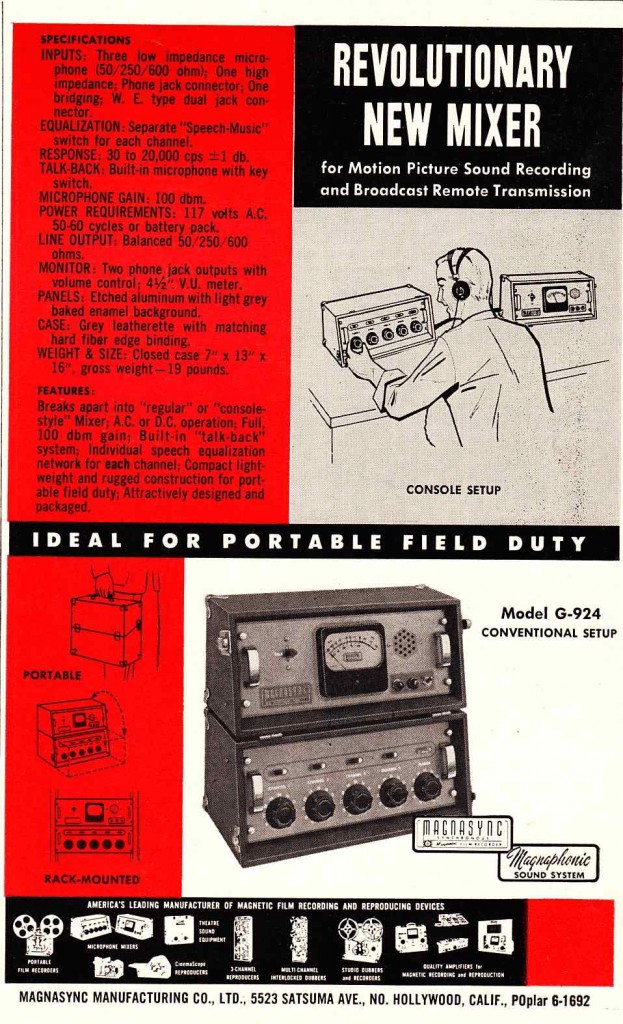 Another remote amp from 1954 – the Magnasync G-924. Looks very cool. Magnasync would soon be merged with the Moviola corporation and become a brand name for sound-for-film equipment. See this previous post for an experiment with the Magnsync URS device.
Another remote amp from 1954 – the Magnasync G-924. Looks very cool. Magnasync would soon be merged with the Moviola corporation and become a brand name for sound-for-film equipment. See this previous post for an experiment with the Magnsync URS device.
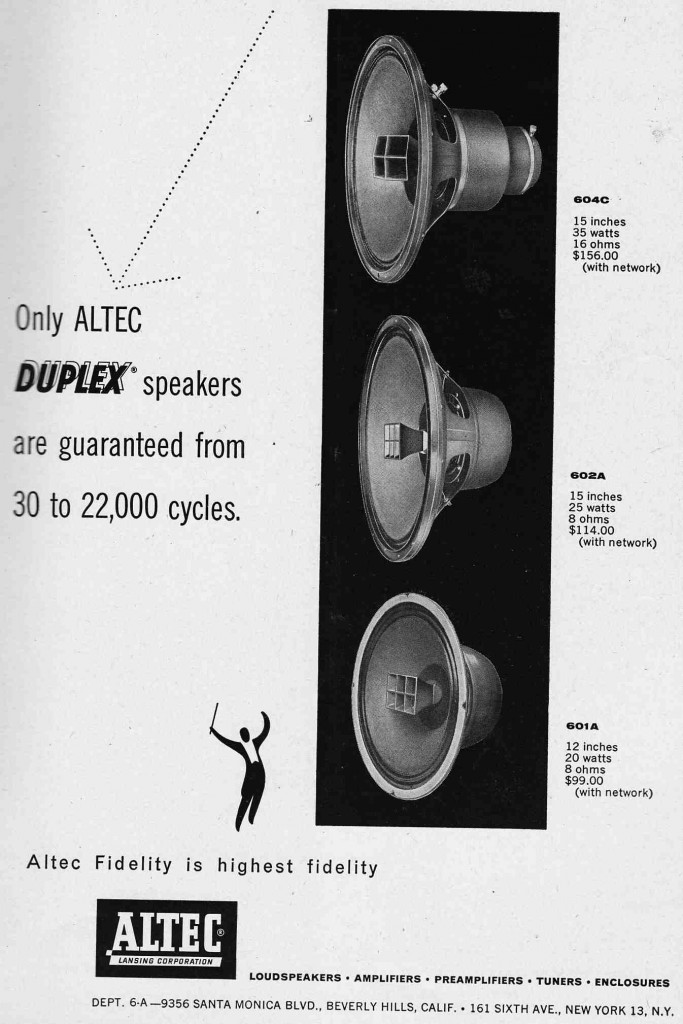 An early ad (1955) for the Altec 604 duplex loudspeaker. The 604 would remain a studio-standard recording/mixing monitor speaker well into the 1970s.
An early ad (1955) for the Altec 604 duplex loudspeaker. The 604 would remain a studio-standard recording/mixing monitor speaker well into the 1970s.
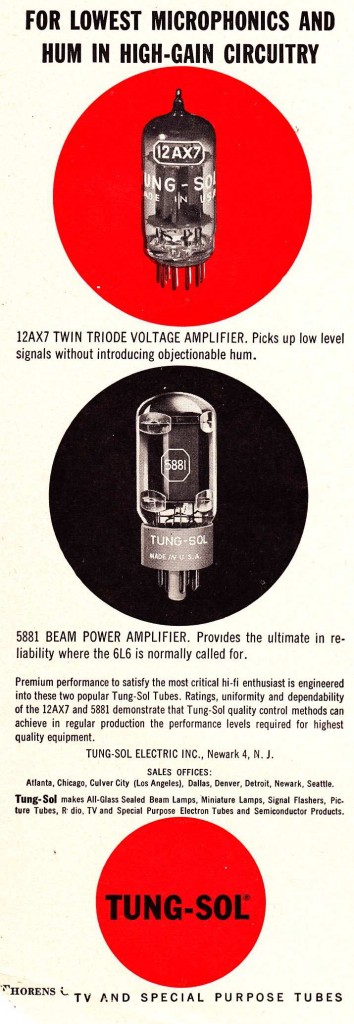 Okay this is getting pretty tech-y but here’s an advert announcing some new-ish tubes you might want to consider: the Tung-sol 12AX7 and the 5881 (AKA ruggedized 6L6). Transistors were on the market at this point (1955) but were a ways off from reaching the performance and reliability that these great tubes offered.
Okay this is getting pretty tech-y but here’s an advert announcing some new-ish tubes you might want to consider: the Tung-sol 12AX7 and the 5881 (AKA ruggedized 6L6). Transistors were on the market at this point (1955) but were a ways off from reaching the performance and reliability that these great tubes offered.
